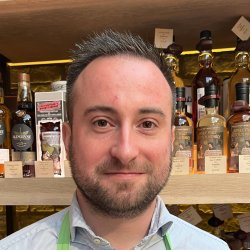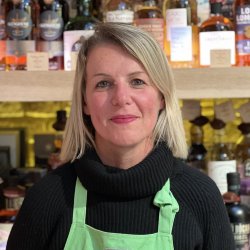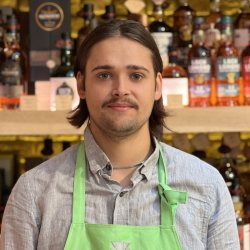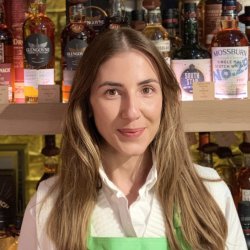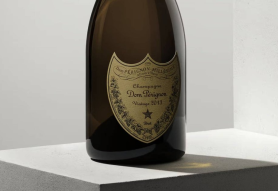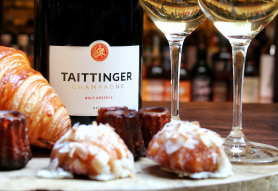Hedonism Meets… Marcus Notaro
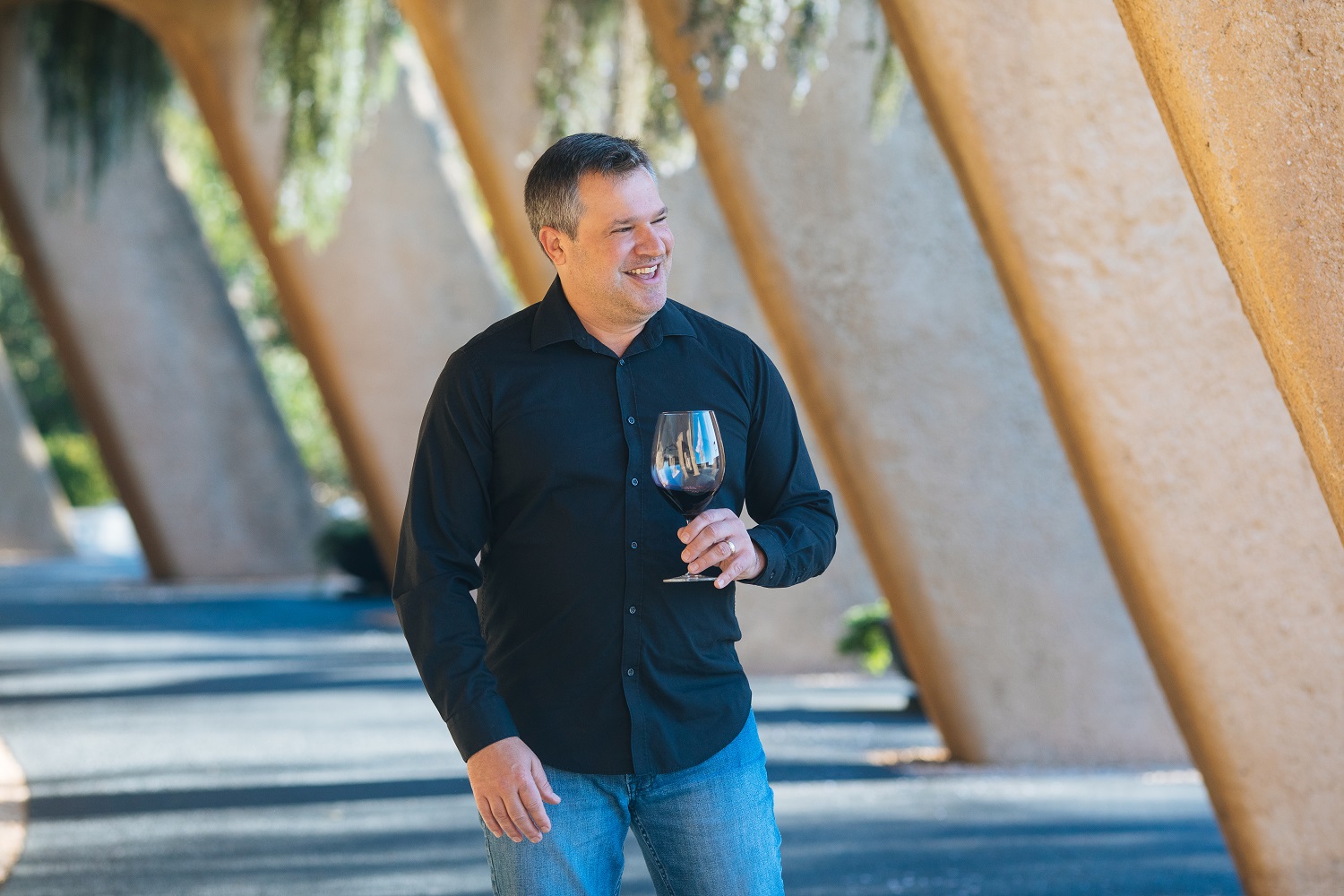
Stag’s Leap Wine Cellars (not to be confused with the similarly-named Stags’ Leap Winery) is a highly renowned Napa Winery, rising to fame following the historic ‘Judgement on Paris’ in 1976 when four of the best white Burgundies and four of the very top red Bordeaux were tasted blind against Californian counterparts. Stag’s Leap Wine Cellars 1973 S.L.V. Cabernet Sauvignon came out top, besting four top-rank Bordeaux and putting Californian Cabernet Sauvignon firmly on the map. Hedonism Wines recently caught up with Head Winemaker, Marcus Notaro, to find out what makes these wines quite so special.
“…the choices made in the vineyard and in the winery have a profound influence not only on the quality of our wine, but also on the health of the environment and the welfare of generations to come”
Can you tell us a bit about your career to date at Stag’s Leap Wine Cellars?
I moved to Napa Valley in the spring of 2013 to become the winemaker at Stag’s Leap Wine Cellars. Previously, I was making red wines in Washington State since 1995 and became the winemaker at Col Solare on Red Mountain in 2003, focused on Cabernet Sauvignon. Like Stag’s Leap Wine Cellars, Col Solare is a partnership between Ste. Michelle Wine Estates and Marchesi Antinori of Italy.
For our estate Cabernets – FAY, S.L.V. and CASK 23, I have made some changes to the winemaking program over the years. I’ve put greater emphasis on matching the type of oak to the wines from the individual estates to heighten the vineyard characteristics. It’s important to me that when you taste our FAY Cabernet Sauvignon you are tasting the true vineyard character. The same for S.L.V. Cabernet Sauvignon. I want to marry the barrel type and toast level to bring out the distinct vineyard notes.
We have also done some replanting in the vineyards and we added some Cabernet Franc in FAY and S.L.V. 2016 was the first vintage I added a hint of Cabernet Franc to the FAY Cabernet Sauvignon. I did this again in 2017 with 2% Cabernet Franc in FAY.
What does a typical day as Head Winemaker involve?
A typical day for me as Head Winemaker certainly depends on the time of the year, as the winemaking year is cyclical. The most fun, of course, is during harvest, so my typical day then is early arrival (before cellar crew) to taste through the fermenting red wines and decide what to remove from the skins and/or the technique and duration of pumpovers/délestage for wines remaining on the skins. Then I catch up on the progress of the red and white wine fermentations. Around 9am it’s time to head out to the vineyards to taste ripening grapes (9 am-1pm is best temperature to taste fruit) and schedule grape deliveries and touch base with our growers on ripening progress. I’m back at the winery in the early afternoon to taste back through the fermenters to decide what to do for the evening pumpovers and meet with my winemaking team to lay out the upcoming plans.

From devastating wildfires in the Napa Valley, to ever-increasing alcohol levels in wines, what impact is climate change having on winemaking at Stag’s Leap Wine Cellars? What are you doing to help mitigate such impacts?
At Stagʹs Leap Wine Cellars, we believe that the choices made in the vineyard and in the winery have a profound influence not only on the quality of our wine, but also on the health of the environment and the welfare of generations to come. Our goal is to ensure that the vineyard environment is in harmony with the natural environment. By embracing rather than competing with Mother Nature, we seek to promote a healthy ecosystem – one that includes vibrant vineyards destined to produce high quality grapes for years to come. We are very proud that FAY, S.L.V. and Danika Ranch has Napa Green Vineyard and Fish Friendly Farming certifications and that the winery is Napa Green Winery certified.
In my vintages at Stag’s Leap Wine Cellars, I’ve certainly seen the range Mother Nature can send our way. From long cool growing seasons, to short hot seasons, to fires and everything between. The key is to be able to keep up throughout the season and make adjustments along the way. There’s no recipe for how we farm or how we ferment, and you need to have the tools and flexibility to read what’s happening and react accordingly to grow the best quality grapes and make the best quality wines for the vintage.
“ I want to make complex, balanced, ageable wines that express the terroir of the vineyard”
Can you tell us a bit about the winemaking philosophy that drives your work?
My winemaking philosophy is simple. I want to make complex, balanced, ageable wines that express the terroir of the vineyard (and in this case the incredible terroir of the FAY and S.L.V. estate vineyards) and the true varietal character of the grape.
My ultimate goal is to continually look for ways to increase quality while maintaining our house style and to make the best expression of our vineyards. This place is about innovation and a quest for quality.

Here at Hedonism we sell a range of Stag’s Leap expressions, from Fay to S.L.V., ARTEMIS to CASK 23. What is the story behind these wines?
While the FAY and S.L.V. vineyards adjoin each other, they are very different from one another.
FAY has older soils that were washed down from the Stags Leap Palisades and carried by Chase Creek on the estate. These soils hold more water. With FAY, I get more perfume, red fruit and bramble notes and the wine has softer, silkier tannins. FAY is a 66-acre vineyard, planted primarily to Cabernet Sauvignon with 1.5 acres of Cabernet Franc. The soil is a combination of fine Bale gravelly clay loam and volcanic alluvium.
S.L.V. has younger, red volcanic soil. The wines have darker fruit than FAY with more violets, black currant fruit, richer tannins and structure and a dusty cocoa powder note. S.L.V. is a 35-acre vineyard planted to Cabernet Sauvignon and 1.5 acres of Cabernet Franc. The vineyard soil is volcanic and alluvial with good drainage.
The story of CASK 23 began during the harvest of 1974. Back then, the winery enlisted the help of celebrated winemaker André Tchelistcheff. As he tasted through various lots of new wines from that year, one lot from S.L.V. was so beautiful and deliciously distinct the winery decided it should be bottled separately. It was named CASK 23 for the large wooden cask in which it was aged. Today, the wine is a blend of the most distinctive fruit from the S.L.V and FAY vineyards, resulting in a wine of extraordinary depth and richness balanced by restraint.
ARTEMIS Cabernet Sauvignon, named after the Greek goddess of the hunt, is a wine that truly reflects its name. It’s the culmination of our hunt for the finest grapes from Napa Valley which, when combined with estate-grown fruit, combine to create a Cabernet Sauvignon that expresses the regional character of Napa Valley with the signature style of Stag’s Leap Wine Cellars. This approach results in a wine of lush fruit flavors balanced by extraordinary structure and elegance. Whereas our Estate Cabernet Sauvignons showcase the distinctive characteristics of each vineyard, ARTEMIS demonstrates how astute grape selection and skillful blending can create a wine that represents the sum of Napa Valley’s best Cabernet Sauvignon parts.
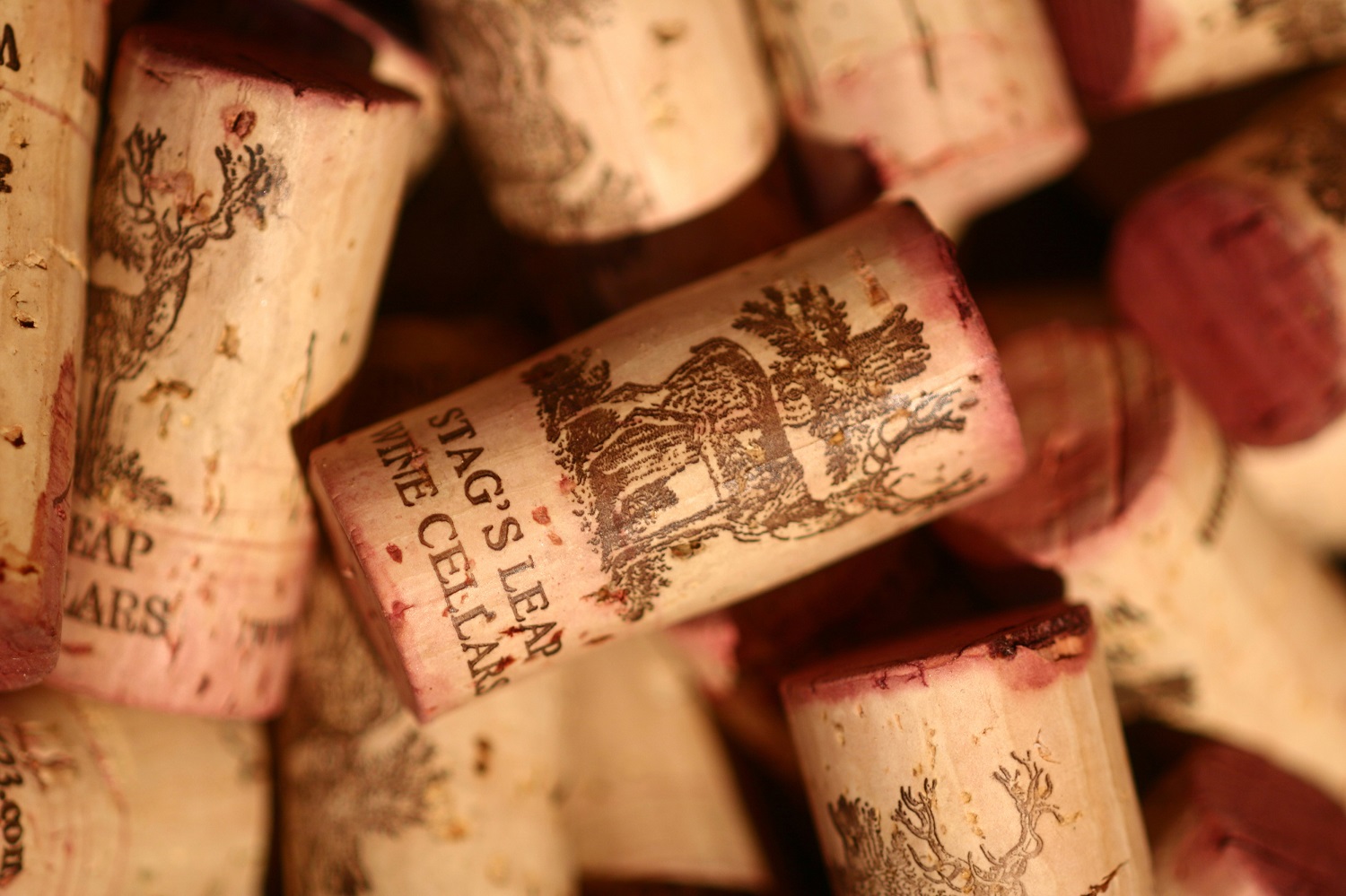
We stock a range of formats – from half bottle to 300cl. How does bottle size impact on the wine’s sensory profile and ability to age?
Not long ago, I opened four bottles of 1995 FAY Cabernet Sauvignon from 750, 1.5L Magnum, 3L, and 5L format. It was very apparent that the larger the bottle, the slower the aging.
How does technological innovation help winemaking practices at Stag’s Leap Wine Cellars?
Innovation and striving to produce the highest quality wines we can is also our priority at Stag’s Leap Wine Cellars. We’ve added some new equipment at the winery to enhance quality winemaking. This includes a basket press for our Estate wines and all new destemming equipment for ARTEMIS. We also installed internal screens on all the fermentation tanks and have changed our pump-over techniques to better match the flavors and tannins coming from the grapes for the vintage.
We have also done some replanting in the vineyards and we added some Cabernet Franc in FAY and S.L.V. 2016 was the first vintage I added a hint of Cabernet Franc to the FAY Cabernet Sauvignon. I did this again in 2017 with 2% Cabernet Franc in FAY.
“The wines from 1990s are in a sweet spot right now.”
What do you think are the best vintages to seek out?
Most consumers can find our current releases in the market and many have bottles in their cellars that they are aging now. The Napa Valley has had a string of fantastic vintages from 2012 to 2019. All of these vintages are great to seek out. Going back to older wines, here are some of my favorites from the last four decades:
The 1980s – Like the wines from the 1970s, the wines from the 80’s should be enjoyed now. These are perfect for commemorating a memorable year in your life – an anniversary, a milestone birthday, etc. I think the 1983, 1986 and 1987 are showing well now. While a cooler vintage, the 1986 wines have ample richness and have aged well.
The 1990s – The wines from 1990s are in a sweet spot right now. These are great wines for those who appreciate drinking wine in its prime drinking window and who love the complexity of wines with some age. As with all the wines, they have been impeccably stored. They have enough age that the tannins have resolved while showing some fruit and hints of spice. The 1993, 1994, 1996, 1997 and 1998 vintages are particularly lovely right now. These wines can continue to age gracefully in your cellar. My personal favorites are the 1993 and 1995 as they are in their prime – very complete and balanced wines.
The 2000s – These are wines for those who appreciate more youthful components in wine – rich, fruit flavors, some of the oak character and a juicy palate. These wines have a long life ahead. I’m particularly impressed with the 2002, 2008 and 2009 vintages.
The 2010s – If you missed your chance to purchase these vintages upon release, this is the chance to add them to your cellar. In this decade, Napa Valley has had a string of incredible vintages. Lay them down. I think our wines are best first enjoyed with 6-8 years of aging from the vintage date on the label. Open a bottle upon receipt and then taste another every few years. Don’t forget to bury at least one in the back corner of your cellar as they will age gracefully for decades.
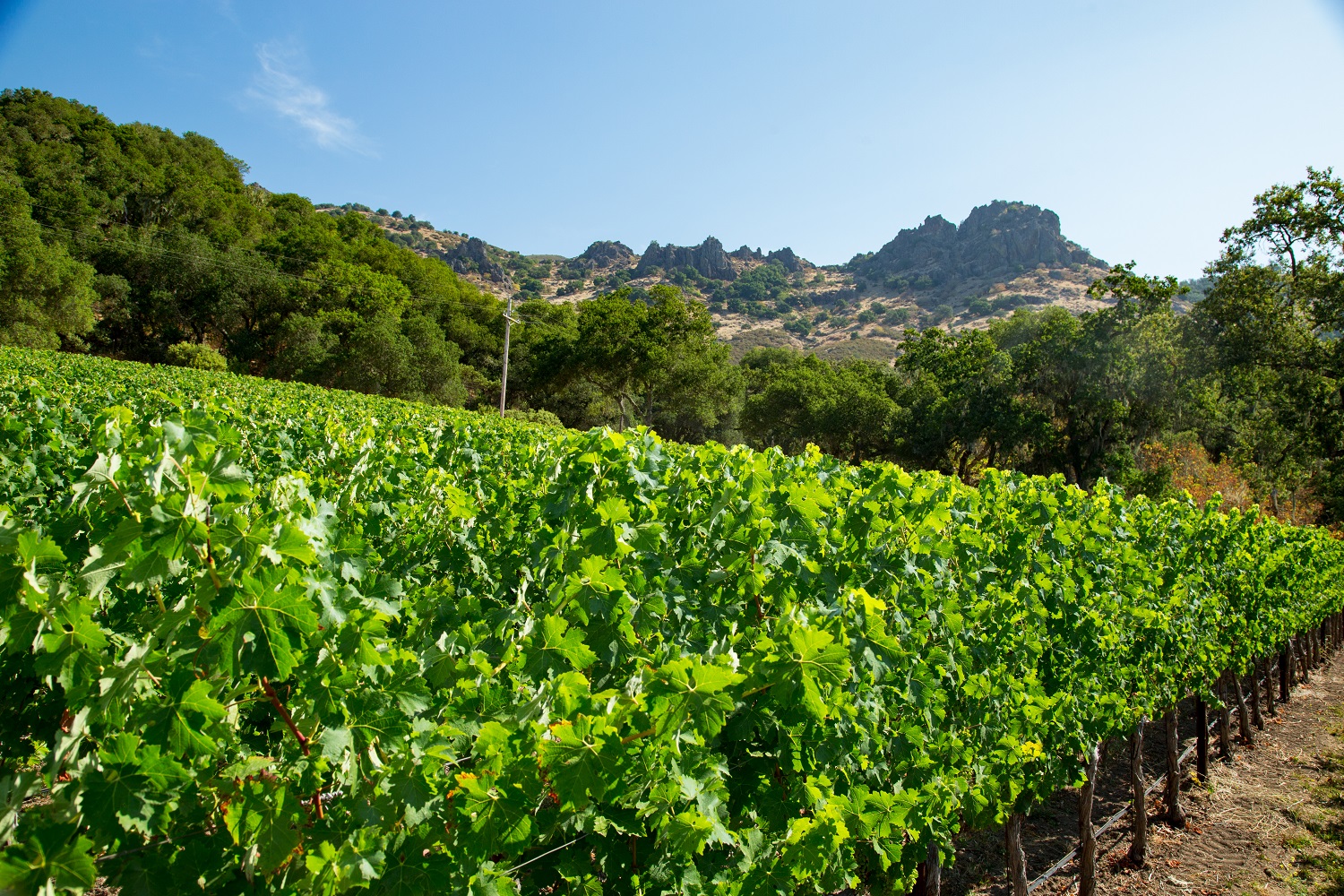
What are the challenges of working with Cabernet Sauvignon? What is behind the choice of including small percentages of red varieties such as Petit Verdot and Malbec?
Cabernet Sauvignon can make a rich, powerful wine without being heavy, while truly expressing where it was grown. My wine style favors balance and complexity, richness and elegance, and captures the unique characteristics of the vineyard. That’s my winemaking goal. By making this style of wine, that ages well, I’m confident that our current fans will continue to love our wines and that we will make new fans along the way, continuing the legacy.
In blending other varieties, you first have to understand the core of what you have (Cabernet Sauvignon), then use other varieties as you see fit to improve the quality of the Cabernet. For us, we have been pursuing higher and higher quality Cabernet Sauvignon, having purchased 120 acres of our own vineyards in the past 6 years and have strong relationships with our long-term family growers. For me, when you have great Cabernet, the one variety that can really improve the complexity and character is Cabernet Franc which we have been planting in our vineyards. That’s not to say other varieties like Merlot, Petit Verdot, and Malbec won’t be part of the blends in the future, but I see ARTEMIS being primarily Cabernet Sauvignon with a part Cabernet Franc in the future.
For someone encountering Stag’s Leap for the first time, which wine would you recommend and what would you pair it with?
My selection would have to be CASK 23; it’s our best effort to make a wine that has intensity, complexity, unique terroir character, and can be cellared for decades. Red wine & porcini braised short ribs with polenta or a grilled NY or Ribeye with mushroom risotto would be perfect.
Are there any new projects on the cards at Stag’s Leap Wine Cellars?
We are hoping to build a new cellar for the production of our Estate and Club wines with tanks and equipment tailored for our vineyards and wine style. I would like to elevate the distinct differences between our FAY and S.L.V. vineyard-designated wines and continue to increase the complexity and intensity of CASK 23 while maintaining its age-worthy style.













